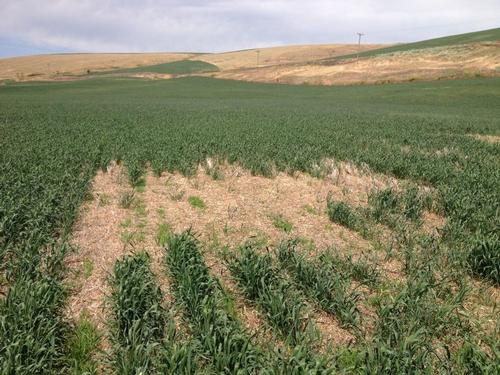Wireworm Damage to Small Grains
Wireworm Damage to Small Grains 6-8-2020
Ruth O’Neill

Wireworms are being reported in high numbers in small grains across much of Montana. Wireworms are the soil-dwelling larvae of click beetles. There are several common species in Montana crops, with some species spending three or more years completing development in the soil before the adult beetles emerge, surviving through several crop rotations.
Wireworms cause damage to the seeds, roots, tubers, and bulbs of various crops. They are worm-like larvae up to one inch in length, with a hardened exoskeleton and variable color depending on species, from whitish to orange. They bore holes directly into tubers, bulbs, and larger roots, and graze on smaller roots and seeds externally. Germinating seeds are a favored food source.
Feeding typically causes patches of wilting, stunting, plant death, or total failure to emerge. Damage tends to occur in discrete patches, sometimes following rows as the insects move to neighboring plants. Dig up plants and inspect the soil in the root zone for wireworms. Check the seed coats of germinated plants to see if they have been broken by feeding.
For questions about monitoring for wireworms, or about suppression of wireworms, contact Kevin Wanner: [email protected].
